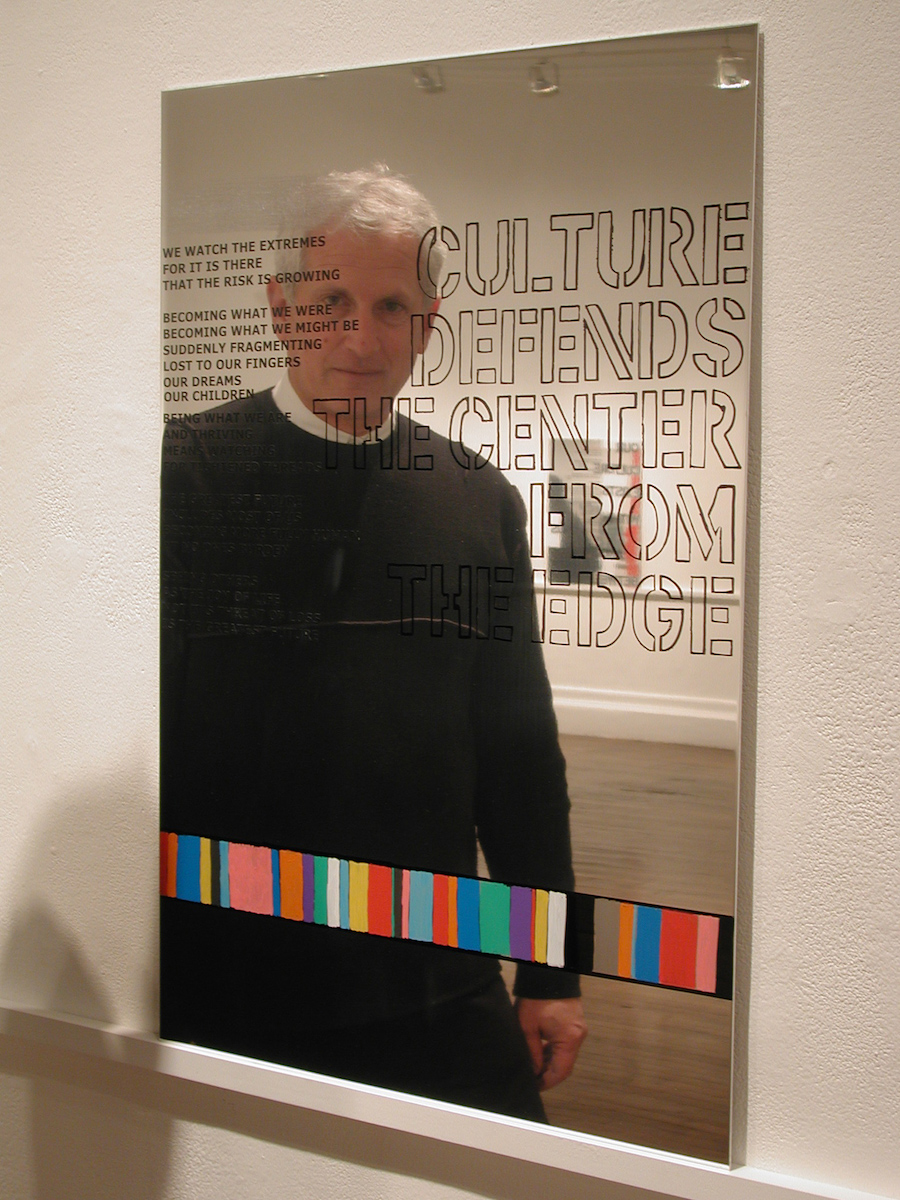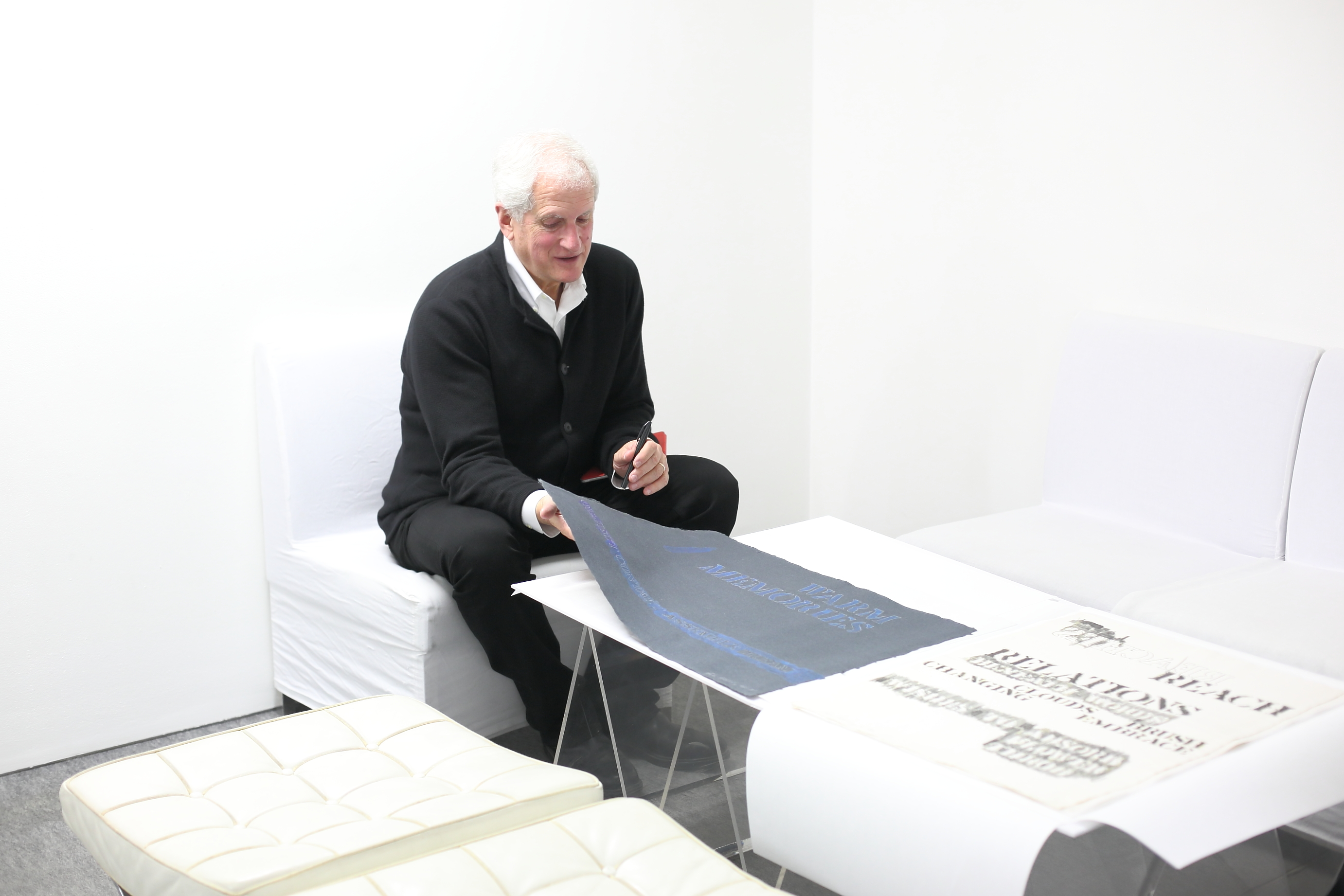
Edwin Schlossberg
Before he was known around the world for how he has changed museums, incorporating interactive technology and audience engagement into their core, Edwin Schlossberg was an artist and a poet. Over the last 50 years, Schlossberg has used words and images to create visual and poetic worlds in his art, using various and unconventional media.
Schlossberg developed as an artist during the 1960s in New York, as a member of its dynamic art scene. Despite working with and befriending several of the most famous artists of that era – Jasper Johns, Robert Rauschenberg and James Rosenquist – Schlossberg’s style has always been his own. While his contemporaries played with words as form, Schlossberg insisted on their meaning, creating poetry with a distinct visual style. Some of his earliest works were poems written on a typewriter on aluminum foil – he created a new application for this everyday material whose artistic value now seems obvious.
Schlossberg’s approach has always been inventive: he received Columbia University’s first combined doctorate (in Physics and English & American Literature), an accomplishment which has enabled him to write poetry and create art on subjects which might intimidate others: neuronal imaging, the earth from above, gravity, systems mapping and other subjects. By making them visual, he has made them legible outside of the technologic and scientific realm.
Through a friend, Suzi Gablik, an artist and art historian, Schlossberg met Johns and Rauschenberg, who became close friends and collaborators. Around this time, Schlossberg also met Tatyana Grossman, a Russian printmaker, and publisher, who ran Universal Limited Art Editions, a lithography studio at her home on Long Island. Grossman published Schlossberg’s first book, WORDSWORDSWORDS, with an introduction by Rauschenberg, which was exhibited at the Jewish Museum in 1968. The poems were presented in an aluminum box, and the last poem, printed on four sheets of Plexiglas, broke apart when the reader picked it up. It was ''about poetry,'' John Russell wrote in a critique in Art International, but ''also about the physical act of reading poetry,” fully immersing the reader in the process of viewing and understanding art.

In an interview with Boston College’s administration newspaper in 1973, Schlossberg said, “I hope they see the words, and then I hope they see themselves.”
Schlossberg’s work, including his contribution to “9 Evenings: Theatre and Engineering,” a 1966 series of performances resulting from the collaboration between artists and engineers, has always employed “the idea of trying to use technology as a contextual support for art,” he said in a 2015 interview. This technological framework is evident in his use of unconventional materials: vinyl, Plexiglas, aluminum, liquid crystal that changes color depending on ambient or applied temperature, copper, Scotchlite, highway sign sheeting, rice paper, bamboo, and bronze.
His artwork has appeared in solo shows and group exhibitions in the United States and around the world. It can be found in private collections and museums, including the Solomon R. Guggenheim Museum, the Metropolitan Museum of Art, and the Museum of Modern Art. In 2004, he won the National Arts Club Medal of Honor, and in 2011, was appointed by President Barack Obama to the U.S. Commission on Fine Arts.
Schlossberg is the author of 11 books and is also the principal and founder of ESI Design, Inc., an experience design studio in New York City which celebrated its 40th anniversary in 2017.